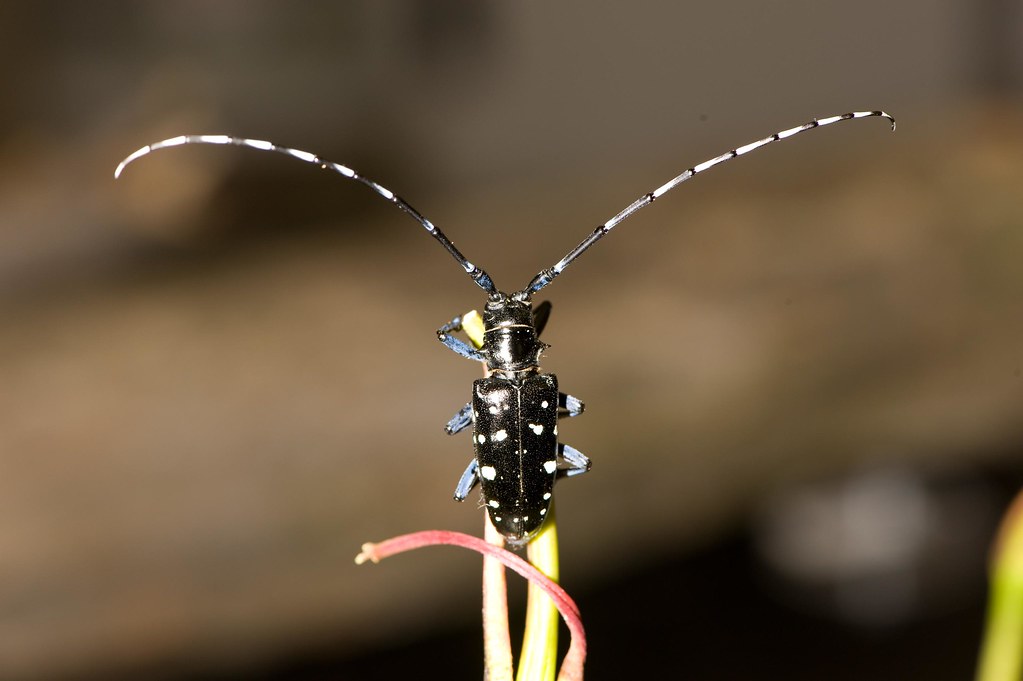Asian Longhorned Beetles
Shiny black with bright white spots, the non-native Asian longhorned beetle (or ALB for short) feeds on a wide range of trees to the point of destruction. Once infected, a tree can’t be saved; tens of thousands of trees have already been lost in the northern and central US.
About
Native to China, Japan, and Korea, the Asian long-horned beetle was first detected in North America in 1996. Most likely it hitchhiked aboard wooden packing material. Since then, it has destroyed over 80,000 trees in Massachusetts, New York, New Jersey, Ohio, and Illinois. Back in 2008, 27,000 infested trees had to be removed in Worcester alone.
The ALB infests hardwood trees, such as maple, birch, horse chestnut, poplar, willow, elm, and ash. The beetle’s larvae burrow so deeply into the tree that insecticide won’t reach them, and it’s impossible to extract them. In the past, they have been reported in Greater Worcester and there was a small infestation in Boston.
How to Identify
The ALB infests hardwood trees, such as maple, birch, horse chestnut, poplar, willow, elm, and ash. Signs of an infestation include:
- Perfectly round, dime-sized (approximately 3/8-inch diameter) holes with smooth edges left by adult beetles exiting a tree
- Shallow oval scars in the bark (1/2″-3/4″ wide) where the eggs are deposited.
- Sawdust-like material on the ground around the trunk or on tree limbs
- The beetle itself. Mature ALBs are shiny black with white spots, measure 1 to 1 1/2 inches (2.5-4 cm) in length, and have two log antennae up to four inches (10 cm). To help identify ALBs, the USDA complied a look-a-like chart.
Early detection is critical and the public is asked to be vigilant. Please capture or photograph any insect suspected of being the ALB. Report suspected sightings by contacting the Massachusetts ALB Cooperative Eradication Program
Massachusetts Infestations
After the Asian longhorned beetle was discovered in the City of Worcester in August 2008, more than 27,000 trees were removed due to infestation. In July 2010, the ALB was found in six trees located on the property of Faulkner Hospital in Boston (Jamaica Plain).
All affected trees were removed and a 1.5-mile “restricted area” has been imposed around the site to prevent the beetle from spreading. No wood or wood products may be removed from this area. The United States Department of Agriculture (USDA) and the state’s Department of Conservation and Recreation are coordinating tree surveys.



